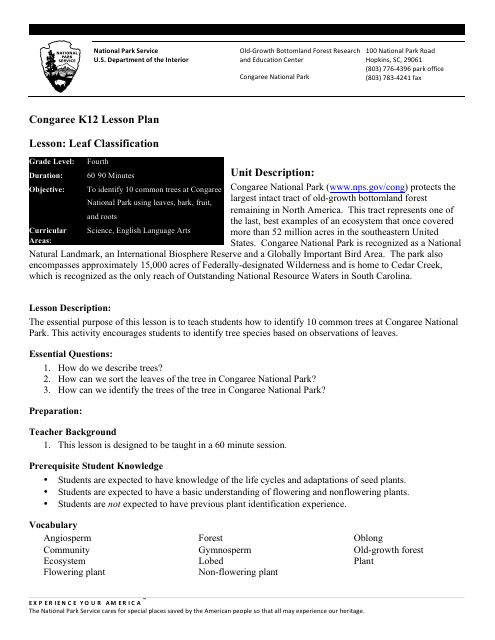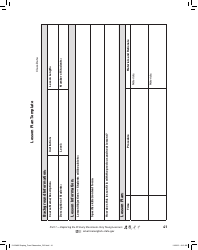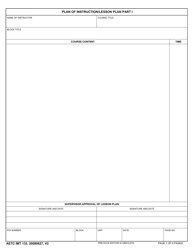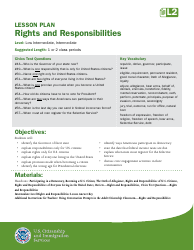Congaree K12 Lesson Plan: Leaf Classification
The Congaree K12 Lesson Plan: Leaf Classification is designed for educational purposes. It is aimed at teaching elementary, middle, or high school students about the different types of leaves and their classifications. The goal is to improve their understanding of botany and natural ecosystems, particularly within the context of Congaree National Park in the United States. The lesson plan would typically feature practical, hands-on tasks such as leaf collecting and identification, making it a fun and engaging way for students to learn. It's also a great resource for educators looking for structured, informative activities to include in their science curriculum.
The Congaree K12 Lesson Plan: Leaf Classification is typically filed by educators, specifically teachers in the K-12 system who are teaching a unit on botany or environmental science. This lesson plan can be used as an educational resource in national parks as well, like the Congaree National Park in the United States. However, the specific individual or authority filing this plan can vary, depending on the educational context. Furthermore, it's important to note this factual information may not be available as it relates to a specific person or entity.
FAQ
Q: What is the Congaree K12 Lesson Plan about?
A: The Congaree K12 Lesson Plan is about leaf classification. It's an educational guide that allows students to learn about different types of leaves, their characteristics, and their role in the ecosystem.
Q: How does leaf classification work?
A: Leaf classification works by identifying and categorizing leaves based on various factors such as their shape, size, color, pattern of venation (vein arrangement), and type of edges or margins (whether smooth, toothed, or lobed).
Q: Why is leaf classification important?
A: Leaf classification is important because it helps in identifying different plant species, understanding their behaviours, and studying biodiversity. It's an essential part of botany and contributes to ecology and conservation efforts.
Q: What age group is the Congaree K12 Lesson Plan designed for?
A: The 'K12' in the Congaree K12 Lesson Plan suggests it is designed for students in kindergarten through 12th grade, making it applicable for a wide range of age groups.
Q: What skills can students acquire from the Congaree K12 Lesson Plan on leaf classification?
A: From the Congaree K12 Lesson Plan on leaf classification, students can acquire skills like observation, classification, and deduction. They'd also get a foundational understanding of botany and biodiversity.
Q: What other activities are there to do in Congaree National Park?
A: In addition to educational programs like the K12 Lesson Plan, Congaree National Park also offers activities like hiking, bird watching, camping, canoeing, and kayaking.
Q: What is the significance of Congaree National Park?
A: Congaree National Park protects the largest remaining tract of old-growth bottomland hardwood forest in the United States. It's significant for its natural biodiversity and as a place for environmental education and recreation.






















